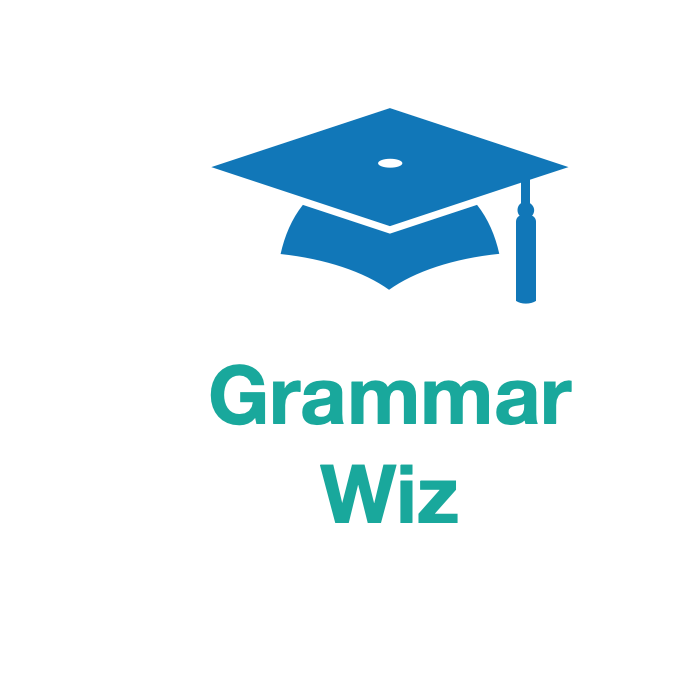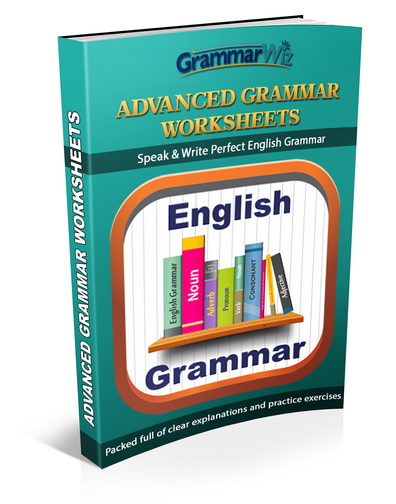- Home
- Types of Verbs
Types of Verbs
There are various types of verbs and verb forms that you need to understand in order to successfully use the English Language.
Read through the page or click on the verb type in the box to go to the explanation of that particular verb. The types are:
Main Verbs
- Action and State
- Copular (linking)
- Transitive & Intransitive
- Ditransitive
Auxiliary Verbs
- Be, Do, Have, and Will
- Modals
Infinitives
- Infinitives with 'to'
- Bare Infinitives
-ing Verb Forms
- Gerunds
- Present Participle
Multiword Verbs
- Phrasal Verbs
- Prepositional Verbs
- Phrasal-Prepositional Verbs
What are Verbs?
Most people often tend to think of verbs as 'action words' or 'doing words' as this is usually how they are first learned at school.
Many do express actions in relation to the subject of the sentence (e.g. jump, walk, draw) but others express things such as mental conditions (e.g. love, believe, doubt), existence (e.g. exist, become) and relationships (e.g. determine, depend).
And other types of verbs are not directly related to expressing what the subject is doing, instead possibly being used to add more information to a main verb or noun. Or they may be used to form adjectives and nouns.
Where verbs come in a sentence depends on what types of verbs they are. Take a look at the following text. The verbs are highlighted in blue:
Jack said that he wanted to see me, but I am not sure whether to believe him. To make him really understand how I feel I think I should have a talk with him as soon as possible.
Usually every sentence must have one verb. Some types of verbs (the main verb) follow after the subject but as you can see from the example above, they can vary in their positions depending on the type of verb it is.
Main Verbs
The first types of verbs are main verbs. Main verbs are finite, which means they have a subject and a tense form.
The general structure of a clause is that it has a subject and a main verb, which can take various forms, such as the past, present, or future tense.
A main verb (also known as principle verb, primary verb, or lexical verb) is the most important verb in the sentence.
It can be recognised as it comes after the subject:
- They arrived
- She is coming next week
- Lately, he has been feeling unwell
- The government lost the vote yesterday
- He is going to town later
- Susan thought about it carefully
This type of verb can be an action or stative verb, meaning it expresses the action or state of the subject of the sentence. It can also be a copular (linking) verb. It will also be transitive or intransitive.
Action and State Verbs
These types of verbs are the primary way that main verbs can be distinguished. Action verbs (also knows as dynamic verbs) express something the subject does.
In contrast to this, state verbs (also known as stative verbs) express a state of mind or mental process.
The main differences are set out below.
Action Verbs
Main action verbs express what the subject can do, and so are dynamic.
They can be used in any tense.
- They jumped over the gate
- He started the car
- She is digging a hole
State Verbs
State verbs express a state of mind, such as an opinion, emotion, sense or preference.
They cannot be used in the continuous tenses:
- I see the problem
- Her perfume smells nice
- I doubt he'll pass
Learn more about Stative Verbs >>>
Copular Verbs (Linking Verbs)
As well as action and state verbs, main verbs can also be copular verbs, also commonly known as linking or complementary verbs. These types of verbs are a subset of state verbs as they are ways in which to express a state of being.
The main purpose of them is to identify the subject, in which case they are followed by a noun or noun phrase:
- She is my freind
- John and Sarah are solicitors
Or to describe the subject, in which case they are followed by an adjective or adjective phrase:
- He seems concerned
- Peter was happy about it
Copular verbs cannot be used alone and need a subject complement (i.e. we can't say 'He seems' or Peter was').
Learn more about Copular Verbs >>
Transitive and Intransitive Verbs
Transitive and intransitive verbs are types of action verbs, though linking verbs are also intransitive verbs.
It's not possible to tell whether a verb is transitive or intransitive just by looking at the verb. It would need to be worked out from the context of the sentence.
Transitive Verbs
These types of verbs require a direct object after them to complete their meaning.
Without the direct object, they would not make sense:
- She took the bus
- He killed the chicken
- They stole the money
Intransitive Verbs
Intransitive Action Verbs:
These are action verbs that do not need a direct object after them.
They make sense alone or with a complement:
- The baby slept (softly)
- She spoke (loudly)
- I declined
Intransitive Linking Verbs:
Linking (Copular) verbs are also intransitive, and these need a noun or adjective complement:
- They boy is happy
- I am John
- They seem confused
Learn more about transitive and intransitive verbs >>
Ditransitive Verbs
These are verbs that take two objects: a direct object and an indirect object.
The direct object is the noun that directly receives the action of the verb while the indirect object is the noun that answers questions about the direct object, such as to whom, for whom, or for what?
For example:
- Bob sent a parcel to Mark
- Sent = ditransitive verb
- Parcel = direct object
- Mark = indirect object (the receiver of the action)
Learn more about ditransitive verbs >>
Auxiliary Verbs
The second types of verbs are auxiliary verbs. They are used to add functional or grammatical meaning to other verbs. So rather than being main verbs, they may be used with a main verb in order to change its function or meaning.
Auxiliary verbs are also known as helping verbs. The two main types of auxiliary verb are:
- be, do, have and will
- Modals (could, should, must, will etc)
'be' 'do' 'have' 'will' Auxiliary Verbs
Be, do, have and will are three auxiliary verbs that have a variety of functions.
The first of these is to make the various tenses. The key ones used are:
- be - am / is / was / were / been etc
- have - have / had / having etc
- will
Here are some examples:
- They have left (present perfect tense)
- She has been working (present perfect continuous tense)
- I am swimming (present continuous tense)
- She will eat it (future tense)
- He will have arrived by 6pm (future perfect continuous tense)
These auxiliaries are then moved around to make Questions and Negative Forms. We make questions by moving the first auxiliary verb to the start of the clause:
- Statement: He has been cycling
- Question: Has he been cycling?
- Statement: The boy is dreaming
- Question: Is the boy dreaming?
Negative forms of sentences are made by adding not or 'nt to the first auxiliary:
- Negative: Hasn't he been cycling?
- Negative: Isn't the boy dreaming?
Since the affirmative forms of the present simple and past simple don't have auxiliaries, we use the following auxiliary verbs to make questions and negative forms:
- Present simple: do / does / don't / doesn't
- Past Simple: did / didn't
Here are some examples:
- Does she have a car? (present simple question)
- He doesn't like fish (present simple negative)
- Did they steal the money? (past simple question)
- I didn't receive the book you sent (past simple negative)
We also use these types of verbs to make the Passive Voice:
- I was arrested
- The tanks are driven by the soldiers
- I have been treated for pneumonia
Modal Verbs
As modal verbs are auxiliary verbs, they again have to be used along with a main verb, not on their own.
Modal verbs are followed by the main verb in the infinitive form (see below for infinitive verbs). Here are the main modal verbs with an example and their function:
- He can read (ability)
- You ought to be more approachable (obligation/advice)
- You must / have to work harder (necessity)
- The car could break down (possibility)
- He might / may come later (possibility)
- I think they should be back by midnight (logical deduction)
These types of verbs can also make questions. In this case they come before the subject:
- Would you pass the salt? (request)
- Would you like to come to dinner on Friday? (invitation)
- Could / can I borrow your umbrella? (asking permission)
- May I help you? (offer)
As noted above modal verbs are used with the infinitive for of the verb which is discussed next.
Learn more about modal verbs >>
'Used to' is also a modal verb but a ‘marginal’ modal verb as it is only used in the past tense. It's therefore only used with the auxiliary verb did for negatives or questions. It's used to talk about past habits or states that are no longer true.
- She used to learn English but she's now given up
- He didn't use to like Italian food though he loves it now
- Didn't you use to live in Spain?
Infinitives
The third types of verbs are infinitives.
It was explained above that main verbs are finite, which means they have a subject and a tense form. However, infinitives are non-finite as unlike main verbs they:
- do not have a subject
- do not take a tense form
These are the base form of a verb and their form is the same as the base form of the present simple that follows I, you, we and they.
This illustrates this difference:
Main Verb (present simple):
I like my Doctor.
Main Verb + Infinitive:
I like to see my Doctor regularly
'See' is the same as the base form of the present simple (i.e. I see, you see etc) but it is not being used as part of the present simple tense ('like' is the verb with the tense i.e. the main verb).
There are two types of infinitive:
- Infinitive followed by 'to' (e.g. to go) as in the above example
- Bare Infinitive (e.g. go) with no 'to'
Infinitive (with 'to')
They have a variety of uses, but these are some of the common uses with examples:
After certain main verbs
- I wanted to find it
- They decided to go
- We need to help them
After certain adjectives
- It's necessary to read it
- I'm sorry to trouble you
- He's excited to see me
After certain nouns
- I have a wish to travel
- There's a need to get food
- He has the ability to help
To give reasons or purpose
- He read the book to improve his English
- I bought this desk to work at
After 'too' + adjective
- I'm too scared to look
- They are too young to get in
- He's too happy to care
After 'too' + 'much/many' + noun
- There's too many people to fit on the bus
- I've too much money to worry about the future
With 'enough' (+ noun)
- I've studied enough to pass the test
- They've got enough (food) to survive
As a subject + clause
- To go with you would be wonderful
- To see Africa one day is my dream
A debate in grammar that often arises is whether you can split infinitives. In other words put an adverb between 'to' and the 'infinitive'. For example:
- I’d like to really understand what you mean
Watch this video on split infinitives to understand whether they are ok.
Bare Infinitive
One way we use the bare infinitive (no 'to') is after the auxiliaries (do, does, did) in questions and negatives when making the present or past simple tenses:
- Do you want it? (present simple question)
- Please don't come tonight (present simple negative)
- He didn't find his wallet (past simple question)
- Did they get their wages last month? (past simple negative)
We also use them after some verb + object combinations, such as 'make' and 'let' and perception verbs:
- They made the students stay late
- Why don't we let them eat unhealthy food?
- I think I heard him say something
- Did you notice them come in?
- I saw her take the tablet
We can though also use the -ing form after these verbs of perception (e.g. ...coming in).
We also use the bare infinitive after why...? and why not...?:
- Why let her know her actual score as it will upset her?
- Why not plan the next trip a bit better?
And we use it after try and, come and, and go and:
- Please try and finish the book
- Why don't you come and see the house?
- Let's go and find John
Learn more about the bare infinitive >>
-ing
Another grammatical class are -ing forms of verbs. They are verbs that end in -ing. For example: eating, drinking, sleeping.
Their main uses are:
- In the continuous / progressive tenses e.g. I am leaving tomorrow
- To add more information to certain verbs e.g. I deny taking the money
- When we want to use a verb after a preposition e.g. I'm interested in studying French
- As subjects and complements e.g. Gambling is addictive
- To list activities e.g. Her favourite sports are skiing, running, and hiking
Although -ing forms of verbs can be considered as one grammatical class, they are also often considered as two separate classes:
- gerunds
- present participles
Gerunds
The -ing form of the verb can function as a noun, and when it does this is is called a gerund. Even though they are usually considered as nouns, not verbs, we'll discuss them here as they are still derived from verbs.
Here are the ways that gerunds are used:
As subjects
- Swimming is my favourite activity
- Driving can be dangerous
- Washing up is boring
After prepositions
- Apply for your licence by filling in the form
- You can't survive without drinking water
- He's good at drawing
After certain verbs
- I won't risk leaving them alone
- I enjoy listening to music
- He avoids taking responsibility
In compound nouns
- Let's go to the swimming pool
- I need driving lessons
- Put them in the washing machine
Present Participles
Present participles have various functions but there are two main ones. One is as adjectives and the other is to form the continuous or progressive tenses.
Adjectives can be spotted as they come before the noun. Forms of -ing in the continuous tenses are evident as they are used with an auxiliary verb such as 'be'.
As adjectives
- The failing business has been sold for a loss.
- The improving grades of the students is encouraging
Forming continuous tenses
- I am trying to get promoted
- They were eating while watching TV
Learn more about present participles >>
Multiword Verbs
Multiwords verbs are types of verbs that are created by combining a verb (e.g. come, go, give, look, take) with an adverb and/or a preposition (e.g. back, off, away, out, on).
- give up
- take out
- look away
- look up to
They are also known as phrasal verbs, prepositional verbs, or phrasal-prepositional verbs, depending on how they are constructed.
They can be a main verb (i.e. have a subject and verb that takes a tense) but they can also be infinitive:
- He gave up smoking (main verb)
- He wants to give up smoking (infinitive)
They are treated as a unique grammatical class because when combined they function as inseparable parts of a single unit. In other words, the words have to be placed together to give their particular meaning.
Here are some examples of each. Note that in some cases the phrasal verb can broken up by the direct object.
Phrasal Verbs
Phrasal verbs are formed by combining a main verb and an adverb particle.
Some of the most common adverb particles used to form phrasal verbs are: at, around, down, away, off, in, on, over, out, round, over, up:
- The film came out in 2014
- The class went on for 3 hours
- The plane took off late
- I can't make out what she is saying
- We can sort the problems out / sort out the problems
- They had little time to put the scaffolding up / put up the scaffolding
View some more Phrasal Verb Examples >>
Prepositional Verbs
Prepositional verbs consist of a verb and a preposition:
- The house was broken into
- I can't do without him
- I look after my sister's children sometimes
- I get on his nerves if I play loud music
Phrasal-prepositional Verbs
Phrasal-prepositional verbs are formed with a verb, a particle and a preposition:
These types of verbs consist of a verb, a particle and a preposition.
- We are going to come up against many issues
- I will look in on my neighbour and check he is ok
- He couldn't face up to the reality of it
- John hoped to get away with it
Learn more about Multi-word Verbs >>
Summary of Types of Verbs
The types of verbs we have looked at on this page are:
- Main Verbs
- Auxiliary Verbs
- Infinitives
- -ing Verb forms
- Multiword Verbs
Some of these are specifically verbs but some, such as present participles and gerunds, are formed from verbs.
New! Comments
Any questions or comments about the grammar discussed on this page?
Post your comment here.






